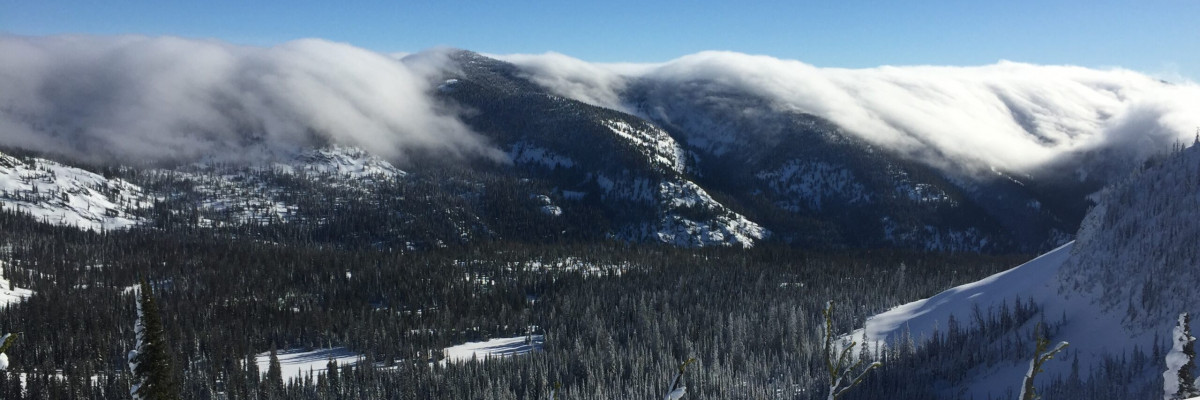The current avalanche danger is MODERATE in the west central Montana backcountry. Human triggered avalanches are possible. Heightened avalanche conditions exist on specific terrain features. Evaluate snow and terrain carefully and identify features of concern.
Good morning, this is Travis Craft with the West Central Montana Avalanche Center’s avalanche advisory for January 15, 2018. This danger rating does not apply to operating ski areas, expires at midnight tonight and is the sole responsibility of the U.S. Forest Service.
Weather and Snowpack
Mountain temperatures range from 20 F 31 F in the region. In the Bitterroot winds are 17 mph with gusts of 22 out of the SE. In the northern part of the advisory area, winds are reading 6 mph with gusts of 8 mph out of the ESE. The forecast area received 0 to 1 inch of new snow in the last 24 hours.
Logan and I toured in the Rattlesnake yesterday. We found small wind loaded slopes. We discovered a layer of buried surface hoar that propagated in pit tests. We saw several loose wet events from days past and yesterday. We have observations from the southern Bitterroot of small wind slabs and loose wet releases in the afternoon. The storm slabs have healed. The facets on top of the Thanksgiving crust are buried very deep in our snowpack and are unreactive in snow pit tests. Avoid likely trigger points(near cliffs and rock bands) where the snowpack is shallower to decrease the possibility of triggering this layer.
The primary avalanche problem is persistent slabs. There is a layer of buried surface hoar in all our ranges that is reactive in pit tests, not every slope or aspect will have it. The only way to find this layer is to dig a pit and see if this layer is present.
The second avalanche problem is wind slabs. Leeward slopes have small wind slabs. Look for rounded pillows of snow near ridgelines and cross-loaded slopes. Recognize signs of instability such as cracking in the surface snow. These slabs will be sensitive to human triggers.
The final avalanche concern is loose wet activity on southern exposures in the afternoon. When you see roller balls, it is time to move to shadier aspects. These avalanches can entrain a large amount of snow and can have consequences if they knock you down and take you into terrain traps(trees, rocks, and cliffs).
Avalanche and Weather Outlook
Our next chance for snow will be in the middle of the week. Here is the link to weather discussion. With this forecast look for the avalanche danger to stay the same.
If you are out in the backcountry, please send us your observations, these are very helpful in producing the advisory. I will issue the next advisory on January 18, 2018.
Ski and ride safe.
























